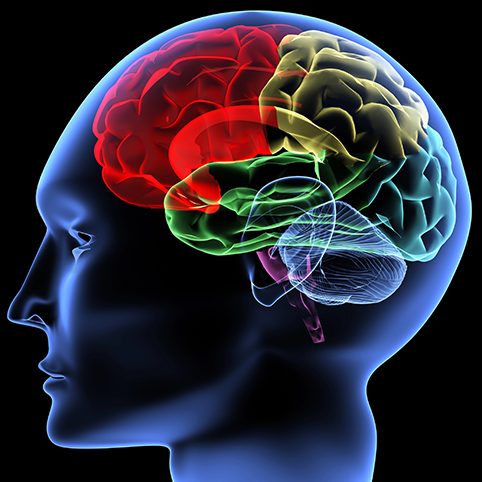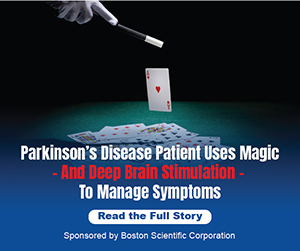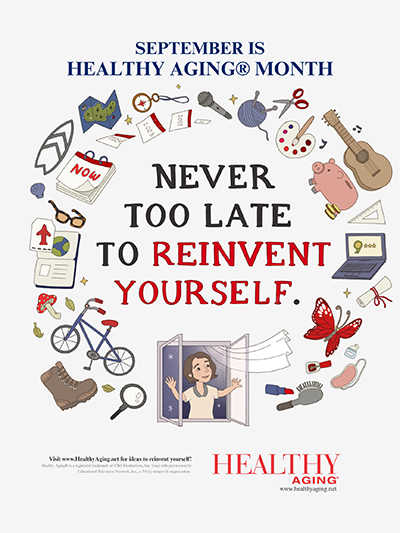
By Healthy Aging®
Our brains are remarkable, ever-changing organs — intricate networks of neurons that evolve with every new experience. From childhood through our senior years, how we engage with the world profoundly impacts how our brains function, adapt, and age. The idea that brain health is tied to active engagement isn’t new. Still, emerging science continues to reinforce just how critical activity is in preserving cognitive function and delaying cognitive decline.
According to a recent article by Elizabeth Rhodus, Ph.D., an occupational therapist and assistant professor in UK’s Sanders-Brown Center on Aging, our brains develop through neuroplasticity, the brain’s lifelong ability to form and reorganize synaptic connections in response to learning, experience, and environment. Think of it as a vast highway system — every new experience or piece of knowledge adds a lane, a shortcut, or even a new on-ramp. The more routes available, the better traffic (or thoughts, memory, and reasoning) can flow.
The Building Blocks of Brain Health
Neuroplasticity is particularly responsive to enriching experiences — travel, education, social interaction, physical activity, and hobbies that challenge the mind. These activities forge new neural pathways and reinforce existing ones. Over time, these connections accumulate to create what neuroscientists call cognitive reserve, a kind of mental scaffolding that helps our brains withstand the effects of aging or even disease.
“Cognitive reserve doesn’t make us immune to neurological conditions like Alzheimer’s,” says Dr. Yaakov Stern, a clinical neuropsychologist at Columbia University. “But it can help us function better and longer, even as disease progresses.”
So, how do we build and maintain this reserve? The answer lies in staying engaged — physically, mentally, and socially — throughout every stage of life.
Social Engagement: Connection is Cognitive Currency
Being around others isn’t just good for your mood — it’s protective for your brain. Socializing requires rapid-fire cognitive processes: listening, interpreting, responding, empathizing. These interactions stimulate multiple areas of the brain simultaneously.
Loneliness and isolation, by contrast, have been linked to increased risks of dementia. A 2021 study in The Journals of Gerontology found that socially isolated older adults had a 26% higher risk of developing dementia. And it’s not just about the quantity of social interactions — the quality matters too. Deep, meaningful conversations are particularly effective in activating memory and emotional regulation centers in the brain.
Whether participating in a book club, volunteering, or chatting with neighbors, making a habit of social engagement is a powerful step toward maintaining mental sharpness.
Physical Activity: Move Your Body, Boost Your Brain
Physical activity is one of the most potent tools we have for brain health. Exercise increases blood flow to the brain, which means more oxygen and nutrients reach neurons, supporting their growth and function. Regular movement also reduces inflammation and stimulates the release of growth factors — chemicals that promote the survival and formation of new brain cells.
According to the American Heart Association and the American Academy of Neurology, older adults should aim for 150 minutes of moderate physical activity per week — that’s just 30 minutes a day, five days a week. This doesn’t have to mean intense workouts. Brisk walks, gardening, cycling, dancing, or even energetic house cleaning can all help.
In fact, a 2019 study published in Neurology found that physically active older adults had larger volumes in critical brain areas, including the hippocampus — the region responsible for memory and learning.
Cognitive Stimulation: Keep Learning, Keep Growing
Our brains thrive on novelty. Engaging in cognitively stimulating activities challenges us to think in new ways, keeps neural pathways firing, and encourages the growth of new connections. This is particularly important in older age, when routines can become repetitive and mental stimulation may decrease.
Reading, puzzles, learning a new language or instrument, or trying your hand at creative arts like painting or writing — all force your brain out of autopilot. Research published in Psychological Science showed that older adults who learned new skills over three months — like photography or quilting — showed significant improvements in memory compared to those who engaged in more passive activities.
The key is variety and challenge. Doing crossword puzzles every day may lose its potency if it becomes too routine. Instead, mix it up and aim for activities that require attention, problem-solving, and creativity.
Nutrition: Feed Your Brain
The food we eat plays a vital role in cognitive health. Nutrients like omega-3 fatty acids, antioxidants, and vitamins B, D, and E have all been linked to improved brain function and reduced cognitive decline. Meanwhile, excessive sugars, saturated fats, and highly processed foods are associated with poorer outcomes.
The MIND diet — a blend of the Mediterranean and DASH diets — has been shown to lower the risk of Alzheimer’s disease by as much as 53% in some individuals, according to researchers at Rush University Medical Center. The diet emphasizes leafy greens, berries, whole grains, nuts, olive oil, and fish while limiting red meat, butter, cheese, and sweets.
Drinking plenty of water, limiting alcohol, and being mindful of salt intake can also support optimal brain function by regulating blood pressure and reducing inflammation.
Engagement is the Engine of Brain Health
Taken together, these elements — physical movement, social interaction, cognitive challenges, and proper nutrition — form the foundation of lifelong brain health. However, the most important takeaway is the power of engagement.
“People often assume that slowing down is inevitable with age,” says Dr. Amanda Smith, director of clinical research at the University of South Florida’s Byrd Alzheimer’s Center. “But staying engaged — in your community, your hobbies, your learning — can make a significant difference in maintaining brain health well into your 80s and beyond.”
So, what does this look like in practice? It might mean signing up for a new class, scheduling regular walks with friends, engaging in hobbies, joining a community organization, trying a new recipe, or simply switching up your routine. The point is to keep your brain on its toes.
The Bottom Line
Aging doesn’t have to mean cognitive decline. The brain is dynamic, and through intentional, enriching activity, we can help it stay sharp. Neuroplasticity and cognitive reserve are not just scientific buzzwords — they are real, powerful principles that give us agency over how we age.
The more we engage with life, the more we protect the very thing that makes us us: our minds.
So, stay curious. Stay connected. Stay moving. Because staying active isn’t just good for the body — it’s essential for the brain.














